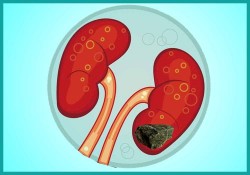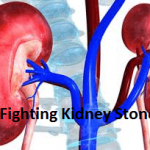
Kidney Disease in India
10-03-2016 | Posted By: Admin | 2184 View(s)
NEW DELHI: In the year 1989, AIIMS set up its first dialysis unit with 13 machines. While the number of cases of chronic kidney disease (CKD) has consistently grown since then, the number of dialysis machines at the premier medical institute remains the same.
Transplant, definitive treatment for kidney failure, has picked up but the lack of donors has come in the way of meeting the demand.
The situation in other government hospitals in Delhi, including Ram Manohar Lohia, Safdarjung and Lok Nayak, is equally bad as they have failed to increase the number machines to cater to a high number of patients.
On the eve of World Kidney Day on Thursday, doctors said preventing the causative factors, primarily diabetes and hypertension, as well as a timely diagnosis, are the only ways to stop the threat that kidney diseases pose.
“No amount of infrastructure development can bring a dramatic change in the situation given the high disease burden. We run the dialysis unit 24×7. Still, only a few can be treated while most patients are left to fend for themselves after the initial dialysis because we cannot provide lifelong services,” said Dr Sanjay Agarwal, professor and head, department of nephrology at AIIMS. Almost 7,000 patients visit AIIMS every month, of which 50% are with CKD.
Patients with failed kidneys require lifelong dialysis, which, in simple terms, means cleaning waste products from the organ. It costs nearly Rs 25,000 per month in a private facility. People who can’t afford this rush to government hospitals. “There is a total of 33 dialysis machines in the Delhi government-run hospitals. A few more have been installed on the public-private partnership (PPP) model. But that is not enough to cater to the high demand,” said a health department official.
The central government in the Union Budget proposed to open dialysis units in all district hospitals, but experts have raised doubts over the availability of specialists to treat patients. “India has only about 1,400 nephrologists, and they are concentrated mostly in cities. We need to train more physicians to treat such cases,” said Dr Dipankar Bhowmik, professor of nephrology at AIIMS.
For now, a focus must be on creating awareness about the disease and pushing those in the high-risk category for regular screening to ensure early detection of CKD, he said.
“We come across so many diabetics who get their sugar levels checked 50 times a year but they don’t ever feel the need to get a urine test done. They should be told about the importance of the latter to detect kidney disease at an early stage,” said Dr Sanjeev Gulati, head of nephrology at Fortis. Those with a family history of kidney failure, recurrent urinary tract infection, diabetes and hypertension must get themselves tested periodically, he added.
An ongoing survey led by AIIMS across eight cities has revealed that 10% of the Indian population has some or other form of kidney disorder.
Unlike Heart Attack and Strokes, diseases awareness about kidney diseases is very low in India. However, the number of people affected by them is more than the combined figure of the other two non-common diseases.
Kidney Disease in Numbers :
-10% of Indian Population affected by Chronic Kidney Disease (CKD)
-Five Lakh require lifelong dialysis or kidney transplant every year.
-Only 50,000 to 60,000 people get regular dialysis.
-Dialysis costs nearly Rs 25,000 per month
-Lack of organ Donors,High Cost (Rs 6-8 lakhs) biggest hindrance to transplant
Need for Early Detection :
-Diabetes and high blood pressure cause 60% of all CKD cases
-Simple Urine and Serum creatinine tests can help diagnose CKD at an early stage.
-Senior Citizens and those with a family history of CKD should be screened for the disease once a year.
Credit: Times of India











